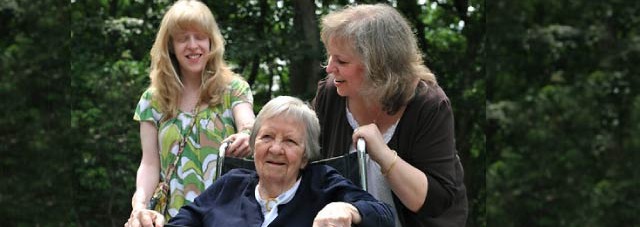 Family members play a crucial part in making sure that mom, dad, or whoever receiving end-of-life attention is having the most painless experience possible. Perhaps most importantly, we want the experience to be unique to their wishes. But what happens when a dying family member is cognitively impaired – what if they have dementia, for example?
Family members play a crucial part in making sure that mom, dad, or whoever receiving end-of-life attention is having the most painless experience possible. Perhaps most importantly, we want the experience to be unique to their wishes. But what happens when a dying family member is cognitively impaired – what if they have dementia, for example?
Then, says New York Times journalist Paula Span, things get tricky.
“How do surrogates actually make decisions for relatives who can no longer direct their own care?” is the topic Span investigates in her recent article. As considerate family members, we hope that our instincts would lead us to listen and deeply consider the needs of a dying family member – even as it becomes more and more difficult to understand those needs.
“As considerate family members, we hope that our instincts would lead us to listen and deeply consider the needs of a dying family member – even as it becomes more and more difficult to understand those needs”
Yet, after reading interviews of dozens of surrogates who had made major life decisions for family members, Span realized that this wasn’t the case. “Surrogates often base their judgments on considerations other than what the patients want,” she says, with the decision-making process following two approaches: “patient-centered” and “surrogate-centered.”

Family members should have a patient-centered approach to decision making. Photo credit: myhealthproxy.org
A patient-centered approach respects what a dying, cognitively impaired patient would want if they were in a position to think and express themselves clearly (ex. the prolonging, or not, of certain treatments.) It’s a task that can put families under immense pressure. Are they making decisions true to, say, mom’s beliefs? But it’s an approach that is usually less problematic than the surrogate-centered approach, in which the surrogate projects their own desires and beliefs onto the needs of the dying.
“Your ideas and your health can change over time, and your surrogate needs to understand your current thinking,” says Span. Her advice is to start that conversation as early as possible – and make sure it’s a recurring one.
Related SevenPonds Articles:
- What is a Home Funeral? Reclaiming the Lost Art of Caring for the Dead and Having a Funeral at Home
- Medical Bankruptcy in the U.S.
- Dartmouth Report Says “Agressive End-of-Life Care” is in Decline

 New York Times Article Says “Values Conflict at the End of Life”
New York Times Article Says “Values Conflict at the End of Life”



 Our Monthly Tip: Toast a Loved One with a Personalized Glass
Our Monthly Tip: Toast a Loved One with a Personalized Glass
 My Cousin’s Death Taught Me the Meaning of Life
My Cousin’s Death Taught Me the Meaning of Life














